Hao Tan(Conception Design,Model Design,Environment Design,VFX Design)
Natalya Buchanan(Environment Design,Model Design)
Jiawen Yin(Environment Design,Camera Design,VFX Design)
Zhenya Yang(Sound Design,Video Editor)
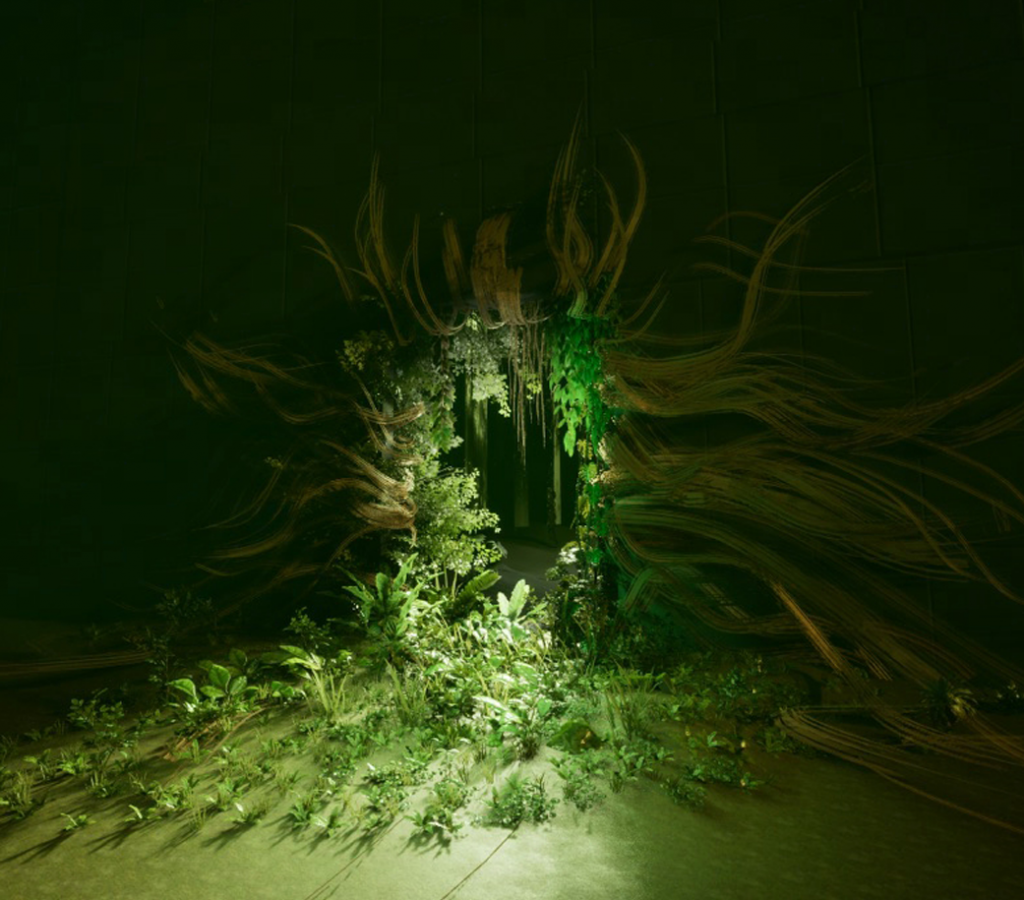
About the Conception
This project is highly connected with my own art creation in my past named: <Lullaby Between Veil of Twilight> it’s an installation sculpture art made of wood and artificial hair.
I like to use hair as my personal material language for express my feeling about Identity, Family Bloodline and Fragile Relationship.
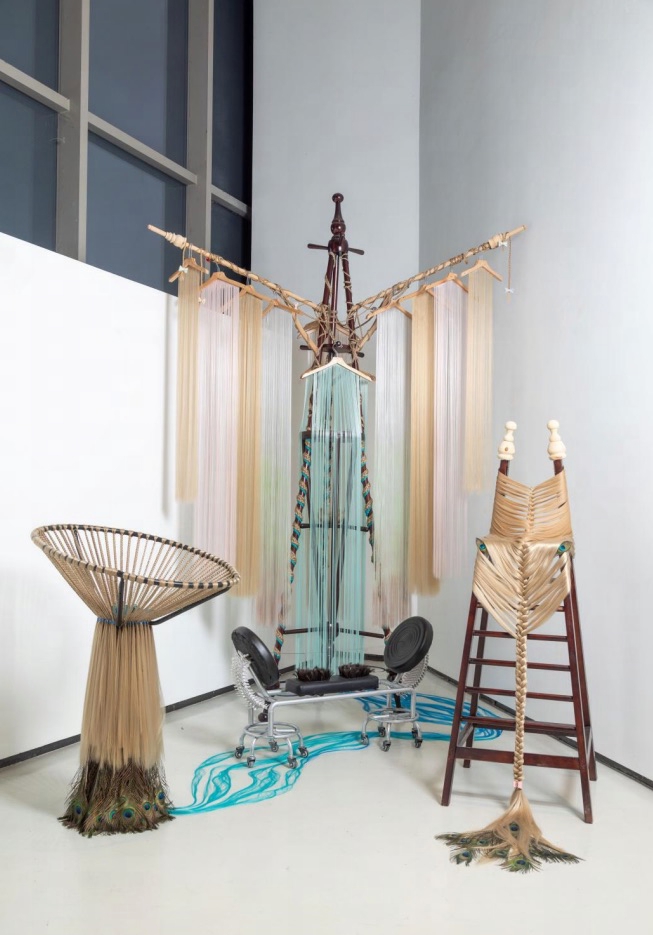
and in this collaboration project, with other teammates help, my ideas can be more bolder and wilder. I wanna expand this conception via different medium, visualizing and digitizing this work into a surreal environment, combine this scene with diverse elements, to evoke a deeper contemplate of society and close relationship.
Idea background: This project takes “pseudo-natural space” as its core metaphor to explorecycle and limitations of family and bloodline inheritance in a closed environment.
The hair-made forest becomes a concrete embodiment of bloodline and family entanglement, symbolising both growth and gestation as well as restraint and limitation.
Overall Narrative: Traditions in families are passed down from generation to generation through blood. The complex relationships are like tangled hair.Once woven, the interwoven hair is hard to separate. Therefore, they can only grow wildly in a closed space,generation after generation, growing, dying, watering and nurturing the next generation. Only after continuous renewal and iteration can be a single hair lifted out to break through the wall and break the closed loop With that we expanded the idea and decided on how to turn this into a video. With hair being the my focus. We will have an environment inside a building with plants, grass and vines. Like a forest inside a building. And have a tree with hair on it at the end of the building
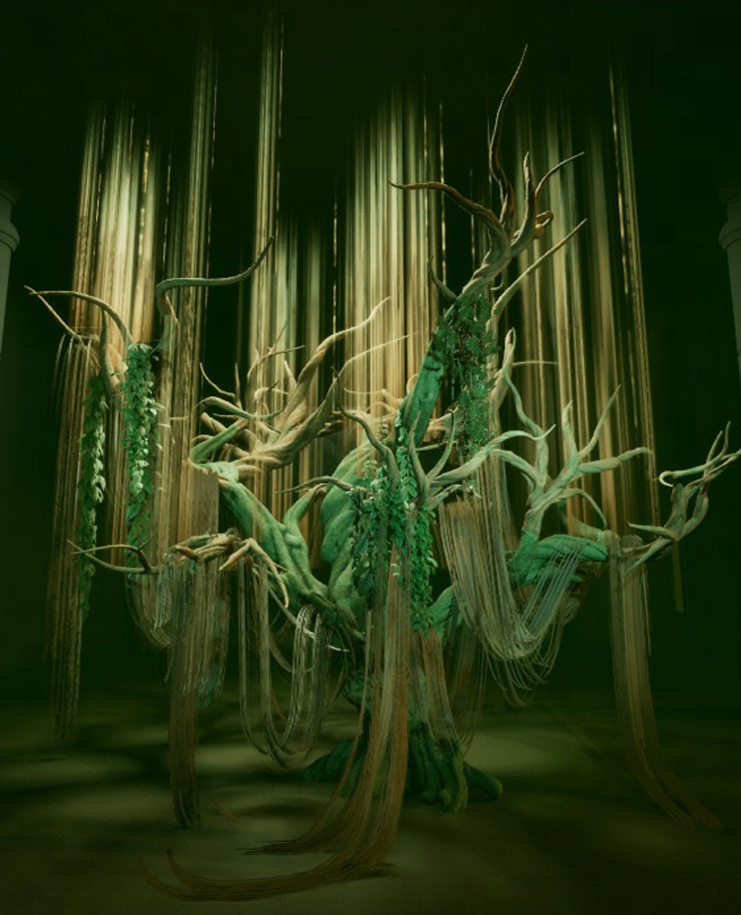
Models Making Process
Make a sheet hair block model by using splines and make the hair attach and wrap around the surface of buildings and tree trunks



Texture Making Process
I made these texture in UE5 with Jiawen Yin and Peiyao Wang’s help, glowing projected natural view, hair texture and infinitely growing upwards dynamic hair
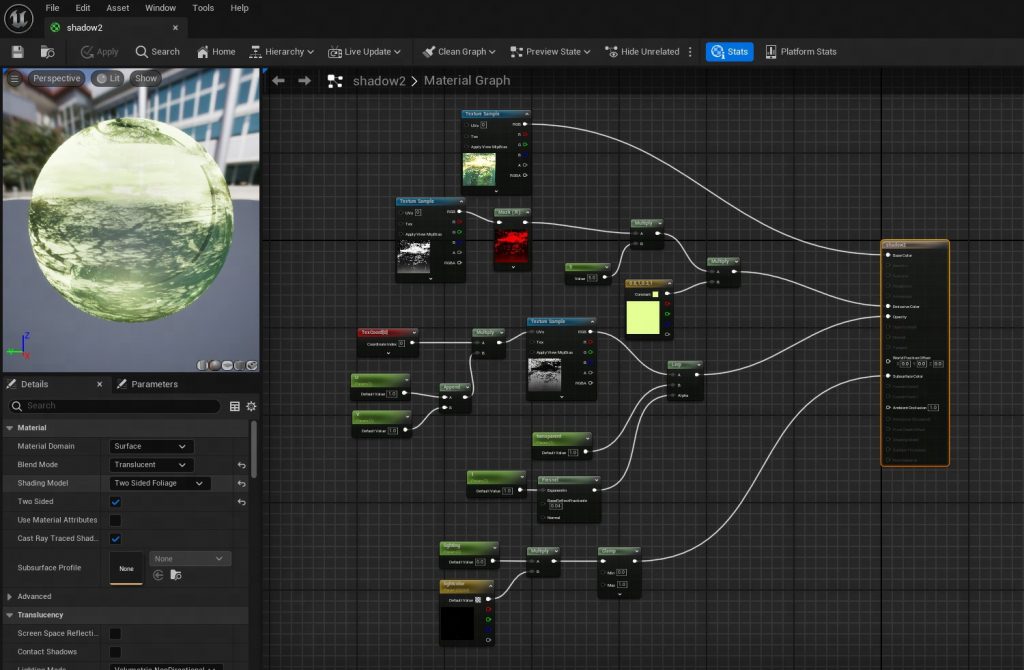
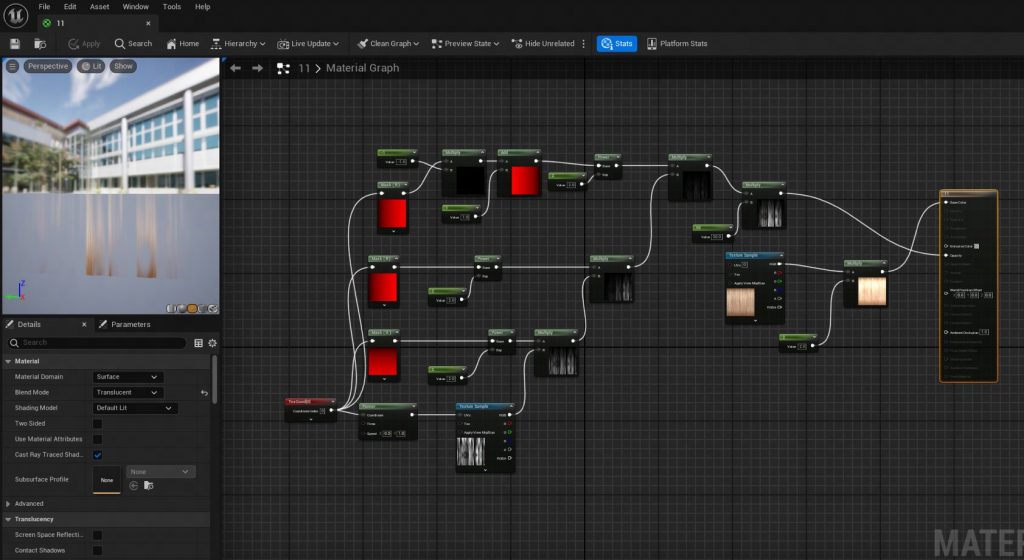
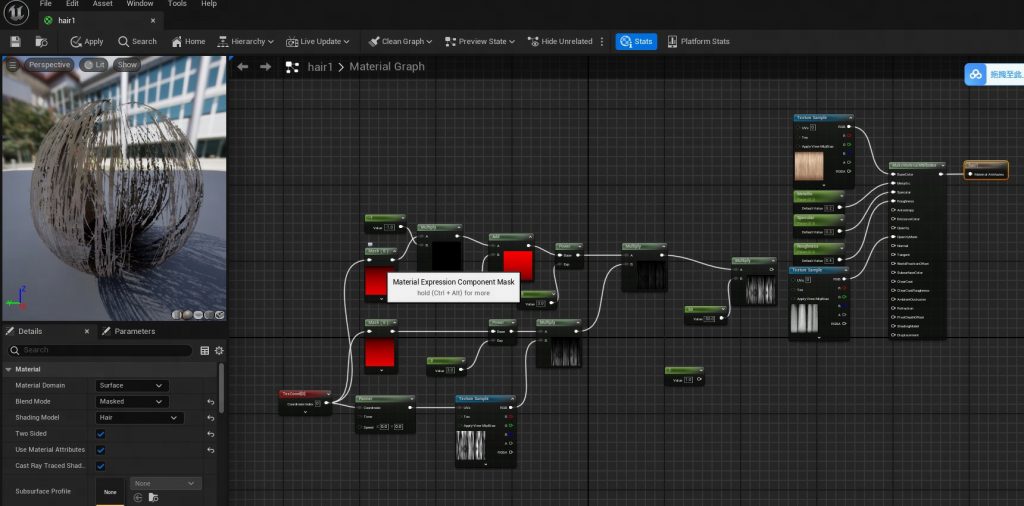
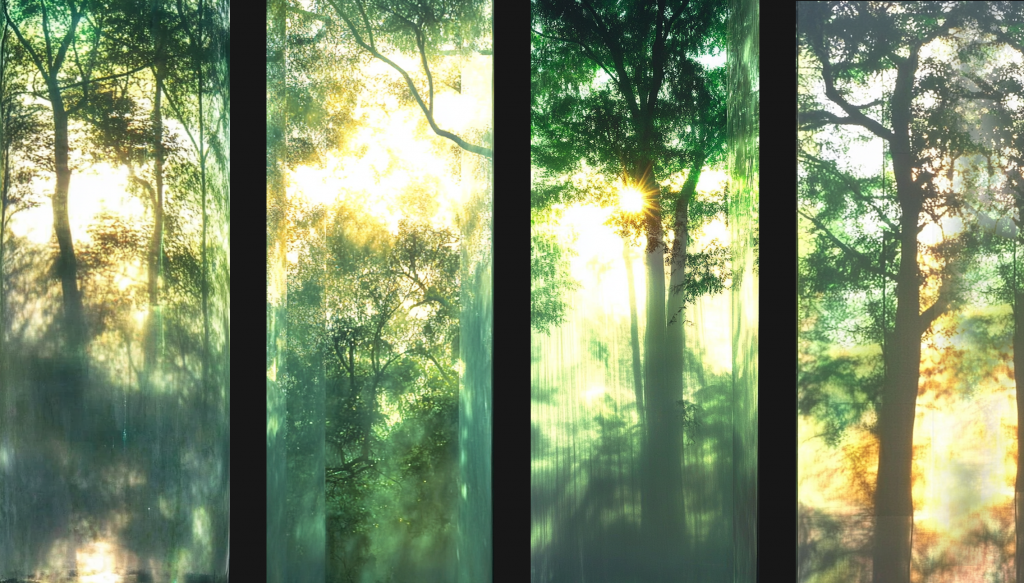
If the hair element represents a kind of discipline based on blood, then a closed-off Brutalist architectural space—with no natural light, filled with artificial “natural” elements—is meant to create a feeling of beautiful horror and warm suffocation. I’m using a space like a “man-made greenhouse” and combining it with the absolute order and efficiency-first language of Brutalist architecture. Again, I’m using strong contradictory comparisons. I’m pitting the disordered growth of a natural forest against the ordered planning of Brutalist architecture and greenhouse cultivation to create conflict.
This spatial design is inspired by Olafur Eliasson’s installation Riverbed. That was a really significant museum installation where he brought a natural riverbed into the closed, narrow space of a museum. It’s disconnected from the horizon of real natural scenery, which raises an open question about how we experience nature. Most importantly, this installation has a repulsive effect: it makes you want to escape the white cube of the museum, emphasizing a desire to go outside and see the real horizon. It questions whether the relationship between humans and nature is now only a superficial, visual representation.
I’m also inspired by another artist I like, Ellen Jantzen. She uses digital editing techniques to deconstruct and reshape natural photography from different times and different spaces, piecing them back together. She lets the past, present, and future exist in a single image, recording the impact, change, and migration of immigrant culture over time and space in a surrealist form.

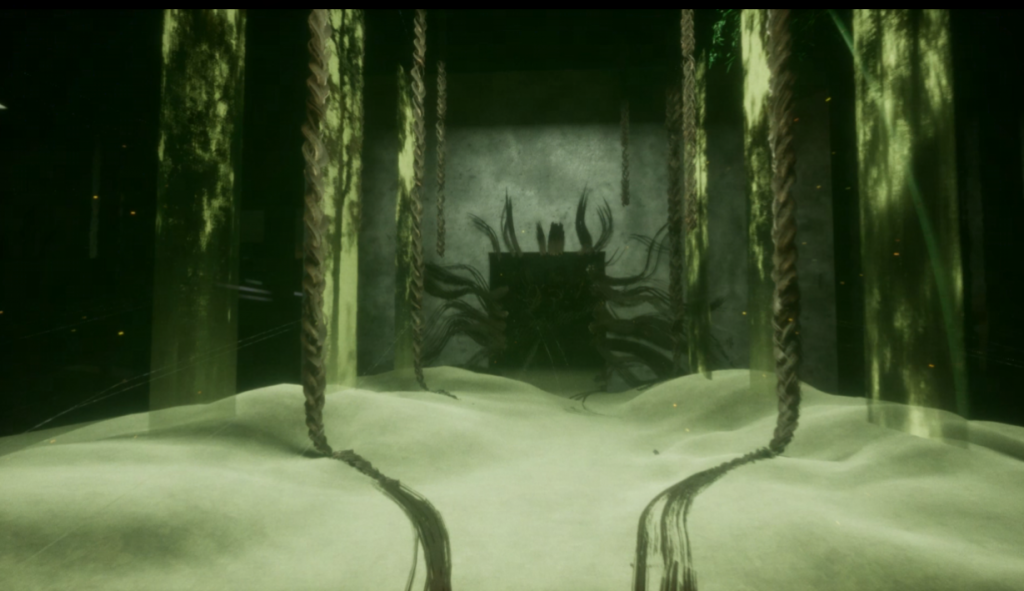


Collaboration Work Flow

Zhenya sort out and summarize a clear copy table

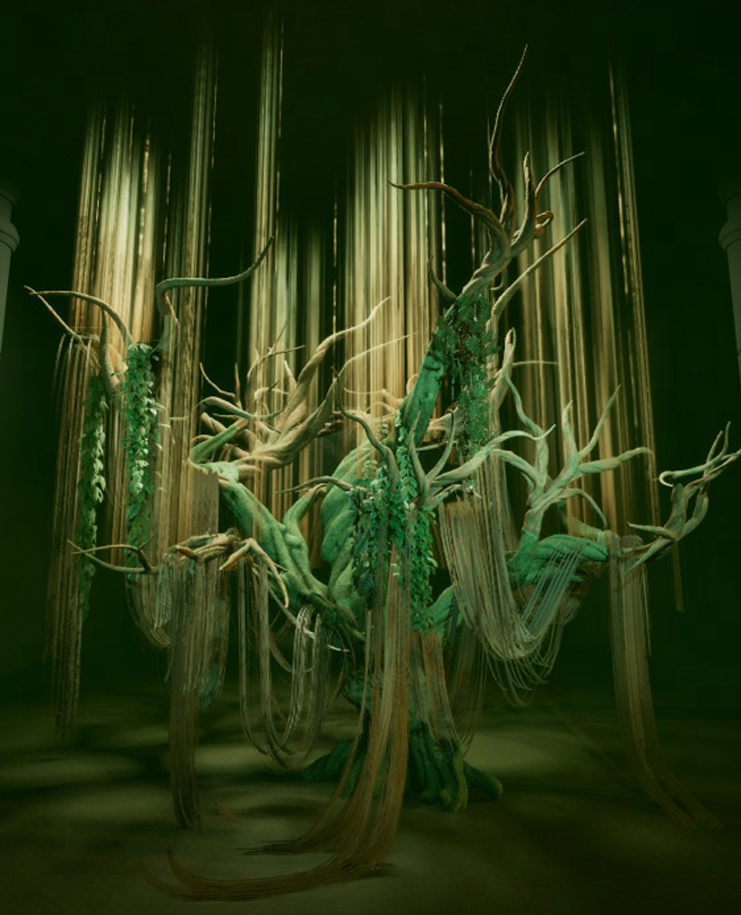







The work invites the audience to feel the motions inside, not to think “How should I escape?” but to feel “What kind of structure am I in?” It doesn’t ultimately offer an answer, but instead poses a heavy question: When freedom isn’t taken away by someone outside the door, but is dissolved by an inseparable “love” and “responsibility” inside that is intertwined with your very self, how are we supposed to deal with that?
By turning this unsolvable problem into a tangible experience, our project does its most profound critical work: it makes us see what that sweet, deadly shackle rooted in our bloodlines really looks like…